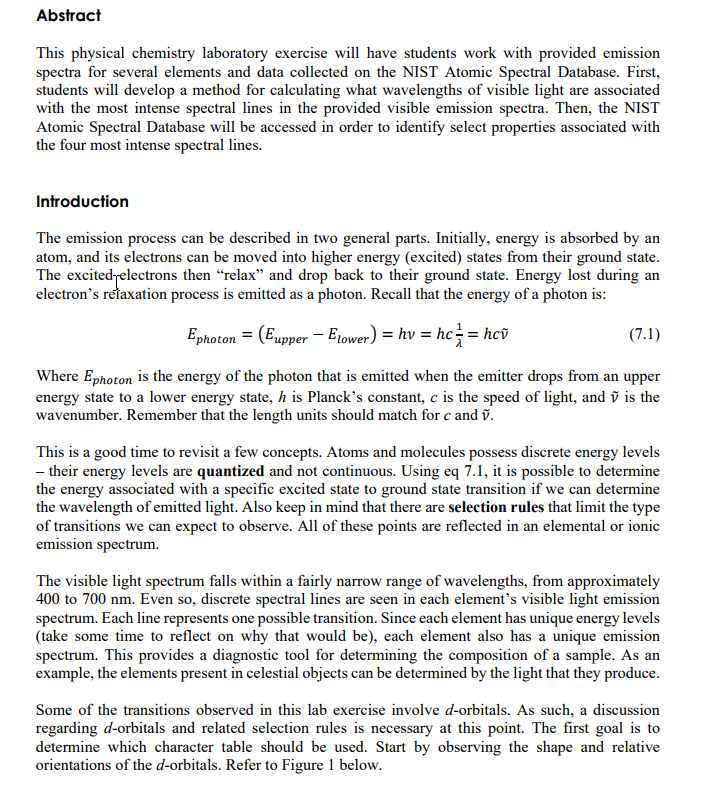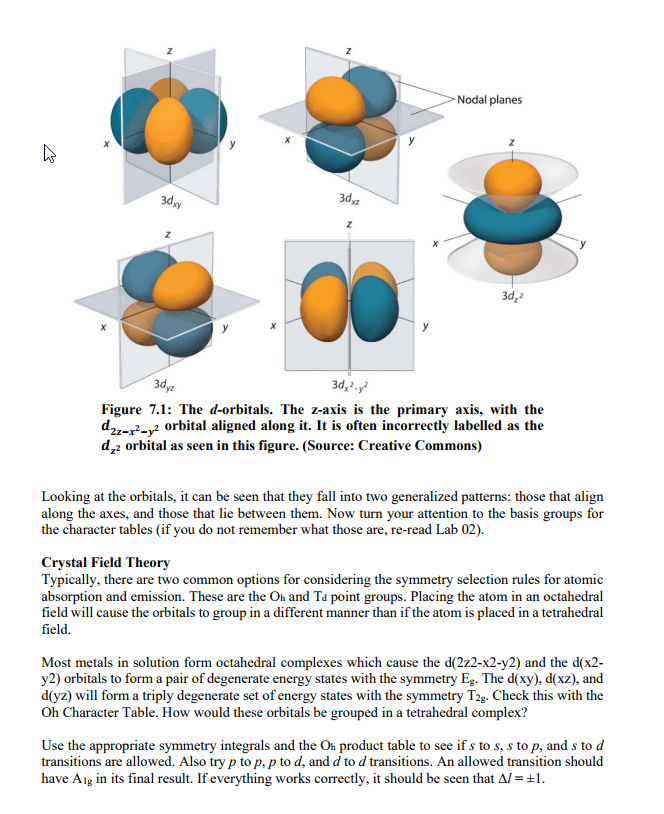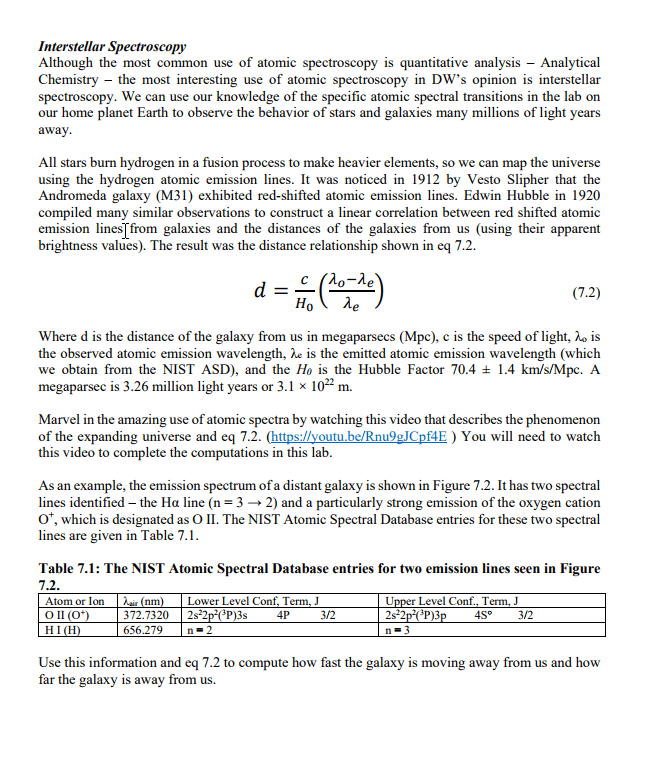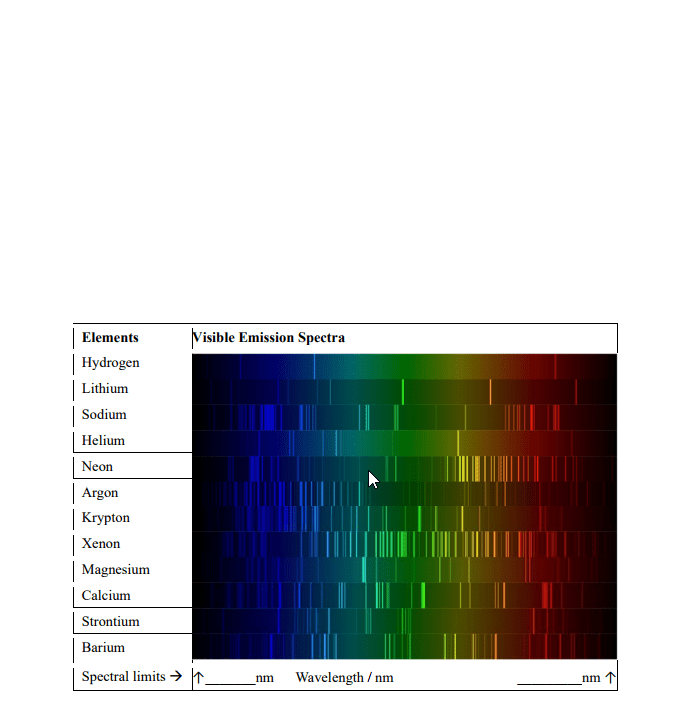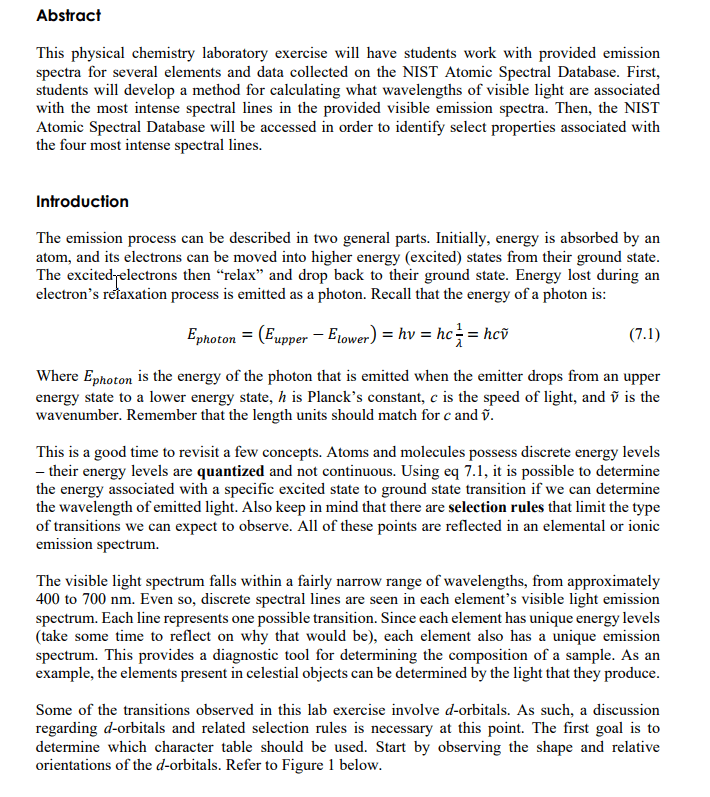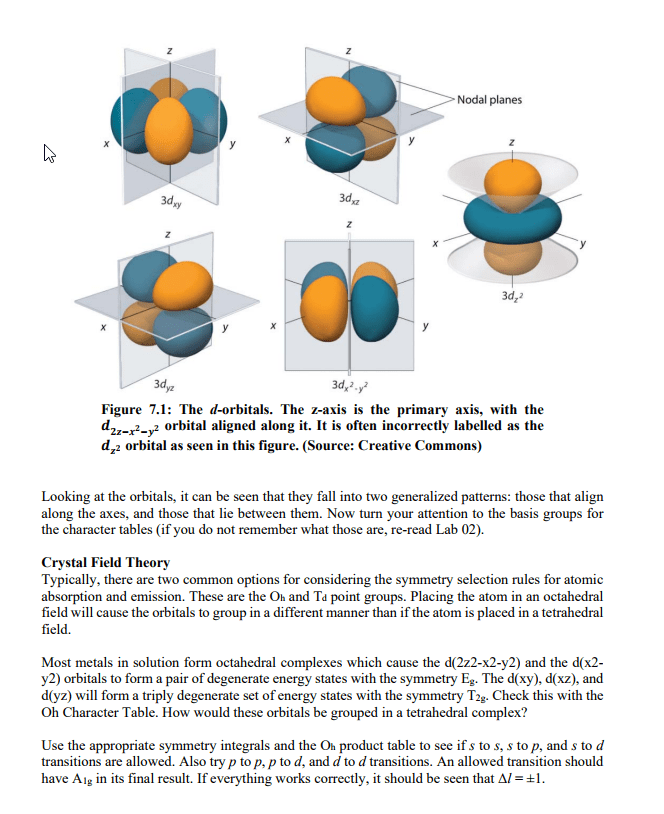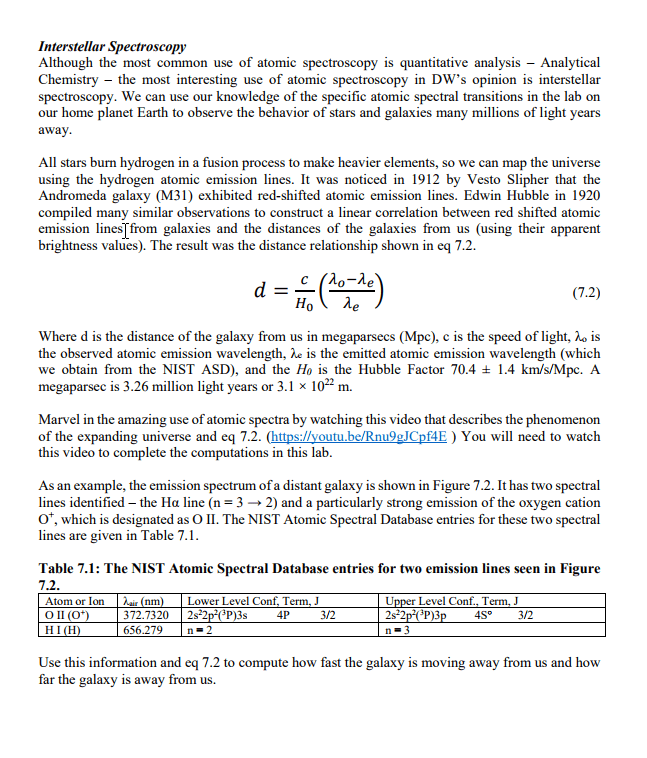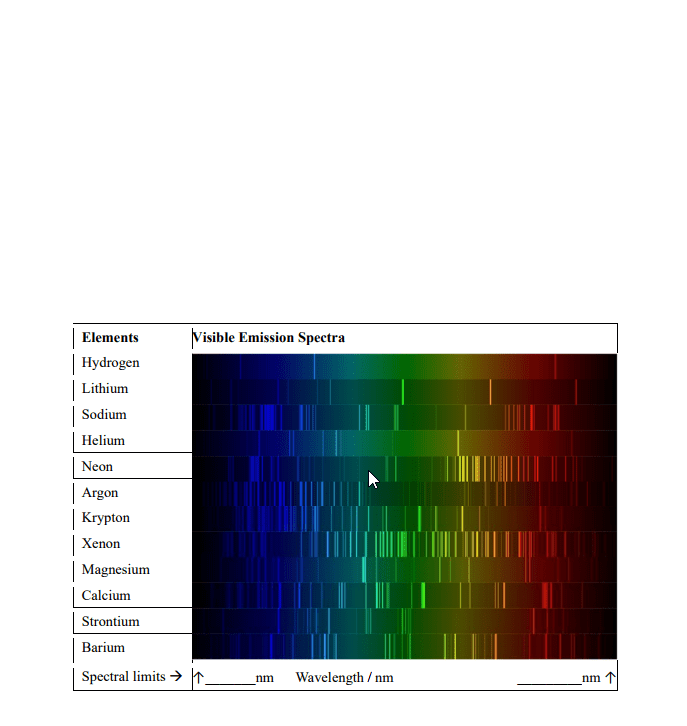Light visible to the human eye is a tiny portion of the entireelectromagnetic spectrum. The most
obvious feature of visible light is color. Each color of light isidentified by its wavelength, which is usually
measured in nanometers (nm). The visible spectrum is the entirerange of colors or wavelengths your
eye can see. When white light from a lamp or the sun travelsthrough a drop of water, it is dispersed
into its component colors. This is the familiar rainbow of colorsand is called a continuous spectrum.
You can produce the same effect by passing white light through aprism or a diffraction grating.
When atoms are excited, either with heat or in an electricdischarge, they absorb energy and are said to
be in an excited state. The excited atoms reemit the energy in theform of light energy when they relax
back to a ground state. The light is emitted only at certainwavelengths that are specific to the atoms in
the sample. Consequently, if this light is passed through a prismor diffraction grating it will appear quite
different from the familiar rainbow. There will be a pattern ofcolored lines separated by dark areas of
no color. These lines of color and their corresponding wavelengthvalues constitute a line emission
spectrum for the element and reveal detailed information regardingthe electronic structure of the
atom.
Every element has a unique line spectrum and the characteristiclines can be used to identify an
element. If a gaseous element is heated and its emitted lightenergy viewed through a diffraction grating
or a prism, you can see the emission lines of that element that arein the visible region of the
electromagnetic spectrum.
As an example, when you look through a diffraction grating atfluorescent light you see three very
noticeable lines or narrow bands of bright color superimposed on acontinuous rainbow. These three
lines are caused by the light emission of glowing gaseous mercuryatoms in the fluorescent tube and the
continuous rainbow is produced by the white light in thefluorescent tube. In the mercury line spectrum,
one line is violet, the second is green and the third is yellow.Each of these lines has a characteristic
position in the visible spectrum, which is the same as saying eachof these lines has a specific
wavelength. For mercury, the visible emission lines are identifiedas follows:
In this experiment, you will use a spectroscope to view lightsources that produce continuous and line
spectra. You will also observe the emission colors produced byheating various salt
Experimental Procedure
Part A: Fluorescent Light
Obtain a spectroscope box. Make sure it has a slide mount whichcontains a diffraction grating taped at
one end. On the side opposite to the grating, there should be anarrow slit made by placing black tape
over an opening. Look through the diffraction grating while holdingthe box up to a fluorescent light.
Light will enter the box through the taped slit. You should see anarrow rainbow band superimposed
over the plastic ruler. Superimposed on this rainbow band should bethe emission lines of mercury. On
your report form, describe what you see with words and apicture.
Part B: Candle and Light Bulb
Take the spectroscope box back to where the candle and light bulbare located. Observe the spectrum
for each. CAUTION: BE CAREFUL NOT TO PUT THE SPECTROSCOPE BOX TOOCLOSE TO THE CANDLE
FLAME. On your report form, describe what you see with words and apicture for the light bulb and the
candle. Pay particular attention to the width of each coloredband.
Part C: Emission Tubes
At various places in the laboratory there are elemental emissiontubes. View each emission tube
through the spectroscope box. On your report form, record the colorof the glowing gaseous element
and the color of each emission line for each element. Also on yourreport form, record where the line is
superimposed over the ruler (in cm).
Part D: Salt Emissions
For this section you need to wear your safety glasses. Your TA willburn various salts. Observe the color
of the flame for each different salt burned. Record the colors onyour report form with the chemical
name and formula of the salt compound.
The questions are:
1. There are safety hazards in this lab. Specifically, what arethese safety hazards? Explain why they are
hazardous.
2. Give the order of colors in a rainbow from shortestwavelength to longest wavelength and provide
approximate numeric values for the highest and lowest visiblewavelengths of light.
3. In the electromagnetic spectrum, as the wavelength increases,what happens to frequency? Give the
mathematical expression that supports your answer.
4. In your own words, describe the difference between acontinuous spectrum and a line spectrum.
5. Which radio station broadcasts at a longer wavelength: 93.9FM or 104.3 FM? To support your
answer, list the actual wavelength values and units for each ofthese radio stations.




